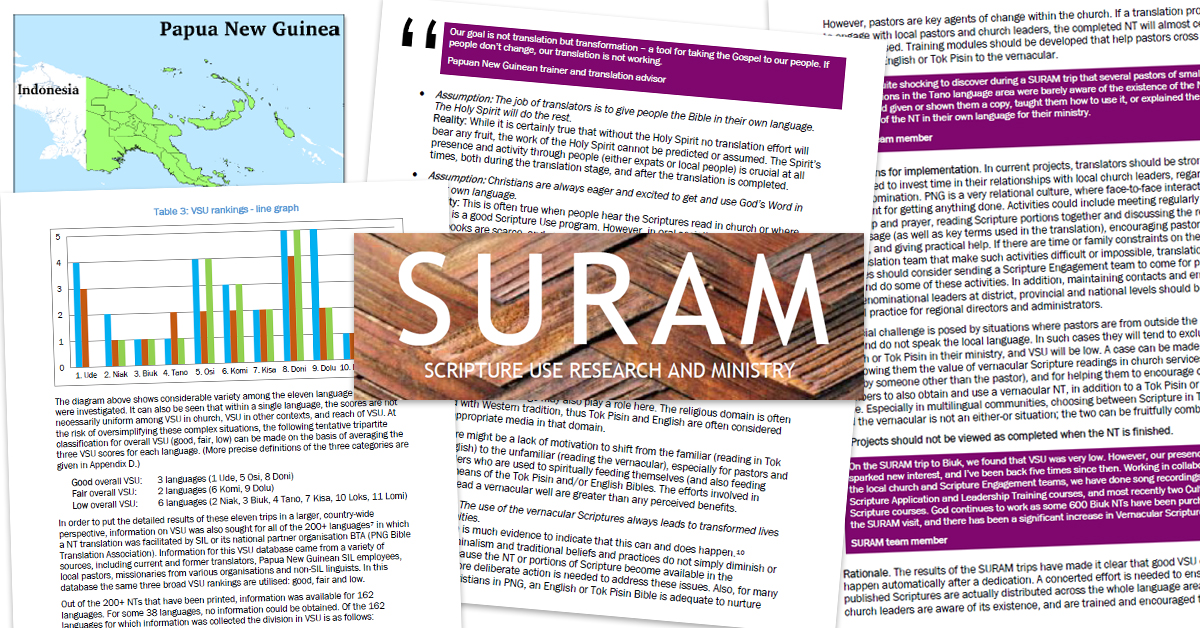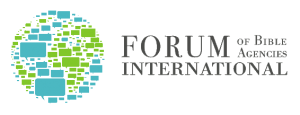
The SURAM Report presents the results, conclusions and recommendations of the SURAM (Scripture Use Research And Ministry) project, which ran from 2014 until early 2017.
SURAM investigated the use, or lack of use, of translated New Testaments in eleven languages spoken in Papua New Guinea. The results of the SURAM trips have made it clear that Scripture Engagement does not happen automatically after the dedication of a translated New Testament.
Some traditional assumptions need to be reassessed. Such assumptions, widely cherished, and often presented in promotional and recruiting materials, are frequently not borne out by the reality in PNG.
Assumptions which need to be reassessed include the following:
- “Translation agencies can focus exclusively on a quality product (the New Testament), since the local church will take responsibility for distribution and use after the dedication.”
- “The job of translators is to give people the Bible in their own language. The Holy Spirit will do the rest.”
- “Christians are always eager and excited to get and use God’s Word in their own language.”
- “When the Word of God is available in a person’s heart language, it speaks with a richness and clarity that no other language can convey.”
- “The use of the vernacular Scriptures always leads to transformed lives and communities.”
The report provides a list recommendations, including:
- Actively engage with church leaders in current projects.
- Projects should not be viewed as completed when the New Testament is finished.
- Re-engage with ‘finished’ projects.
- Visit the whole language area regularly.
- Monitor and evaluate the effectiveness of current translation projects.
The introduction to this report presents background information about the country of Papua New Guinea, as well as the purpose and methodology of SURAM. Following the introduction are the project results, conclusions and recommendations. The report ends with six appendices. The summary statements for the eleven trips in Appendix C provide a cursory view of the diverse and intriguing situations of language and Scripture use in these communities.
Within the field of Scripture Use research, SURAM is unique in that it provides empirically-based field data on the actual use of translated Scriptures in a good number of languages using the same methods. (Dr T Wayne Dye, Scripture Engagement Consultant, SIL International)
This published edition is a slightly revised version of the SURAM Final Report prepared in 2017.



